 |
 |
 |
| |
In 60-Year-Plus HIV Group With Viral Suppression, 70% Have Low CD4:CD8 Ratio
|
| |
| |
IDWeek 2018, October 3-7, 2018, San Francisco
from Jules: As I have said immune distortion by HIV itself is the underpinning for inflammation & accelerated or premature aging & comoridities. On the market anti-inflammatories may not yield the best research outcomes and so far have not, so we need to refocus on immunity in HIV to address the senescence & aging problem, looking for the quick fix may not be the best way.
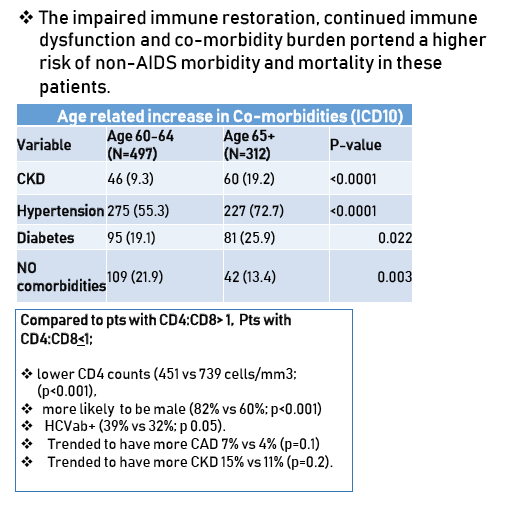
Mark Mascolini
Analysis of 675 virally suppressed people 60 or older showed that 70% had a low CD4/CD8 ratio (below 1) and one third had a very low ratio (below 0.5) [1]. Coronary artery disease and chronic kidney disease were more prevalent in people with a low CD4/CD8 ratio.
Research links older age to slow CD4-cell gains with antiretroviral therapy (ART), indicating a persistently impaired immune system. Chicago researchers who conducted the new study noted that a low CD4/CD8 ratio indicates systemic immune activation during successful ART and independently predicts non-AIDS illnesses. They conducted this study to chart comorbidities in older people with HIV and to pinpoint factors tied to a low CD4/CD8 ratio in this group.
The analysis involved people in care at Chicago's CORE Center, part of the Cook County safety-net health system. Eligible participants were at least 60 years old and had at least 1 primary care visit from January 2016 through May 2017. Researchers charted comorbidities in everyone and assessed CD4/CD8 ratio in antiretroviral-treated people with a viral load below 40 copies.
The overall cohort included 809 people with a median age of 63. Women made up 25% of the group, blacks 74%, Hispanics 15%, and whites 8%. CD4 count averaged 504, 13% had a count below 200, and 84% had a viral load below 40 copies. The most common comorbidities were hypertension (62%), chronic obstructive pulmonary disease (23%), diabetes (22%), depression (17%), and osteoarthritis (15%). More than one third of the study group (38%) tested positive for HCV antibody. Half of participants had 1 or 2 comorbidities, 16% had 3, 15% had 4 or more, and 19% had none.
Three comorbidities were significantly more frequent people 65 or older than in those 60 to 64: hypertension (72.7% versus 55.3%, P < 0.0001), diabetes (25.9% versus 19.1%, P = 0.022), and chronic kidney disease (19.2% versus 9.3%, P < 0.0001). The younger group was significantly more likely to have no comorbidities (21.9% versus 13.4%, P = 0.003).
Among the 675 people with viral suppression, only 30% had a normal CD4/CD8 ratio (above 1), 33% had a ratio between 0.6 and 1, and 37% had a lower CD4/CD8 ratio. Compared with people who had a normal CD4/CD8 ratio, those with a lower ratio had a lower average CD4 count (451 versus 739, P < 0.001) and were more likely to be men (82% versus 60%, P < 0.001) and to have HCV antibody (39% versus 32%, P = 0.05). The group with a low CD4/CD8 ratio tended to have higher rates of coronary artery disease (7% versus 4%, P = 0.1) and chronic kidney disease (15% versus 11%, P = 0.2).
The CORE Center investigators cautioned that impaired immune restoration and comorbidity in an aging HIV population "portend a higher risk of non-AIDS morbidity and mortality."
Reference
1. Adeyemi O, Diep L. Multi-morbidity and impaired CD4/CD8 ratios in older adults with well controlled HIV. IDWeek 2018, October 3-7, 2018, San Francisco. Abstract 603. Poster at https://idsa.confex.com/idsa/2018/webprogram/Paper69946.html
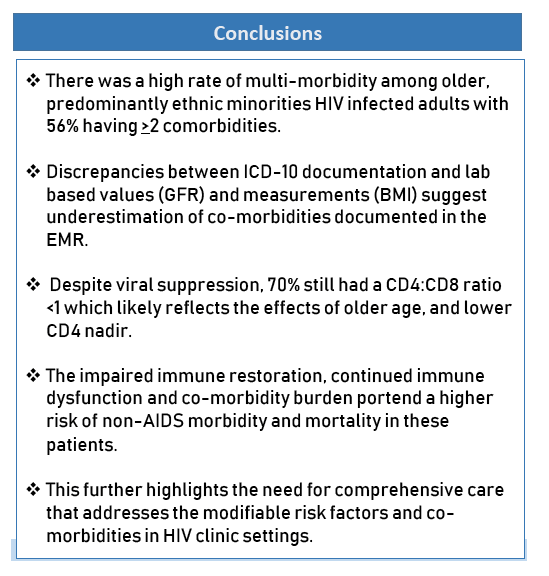
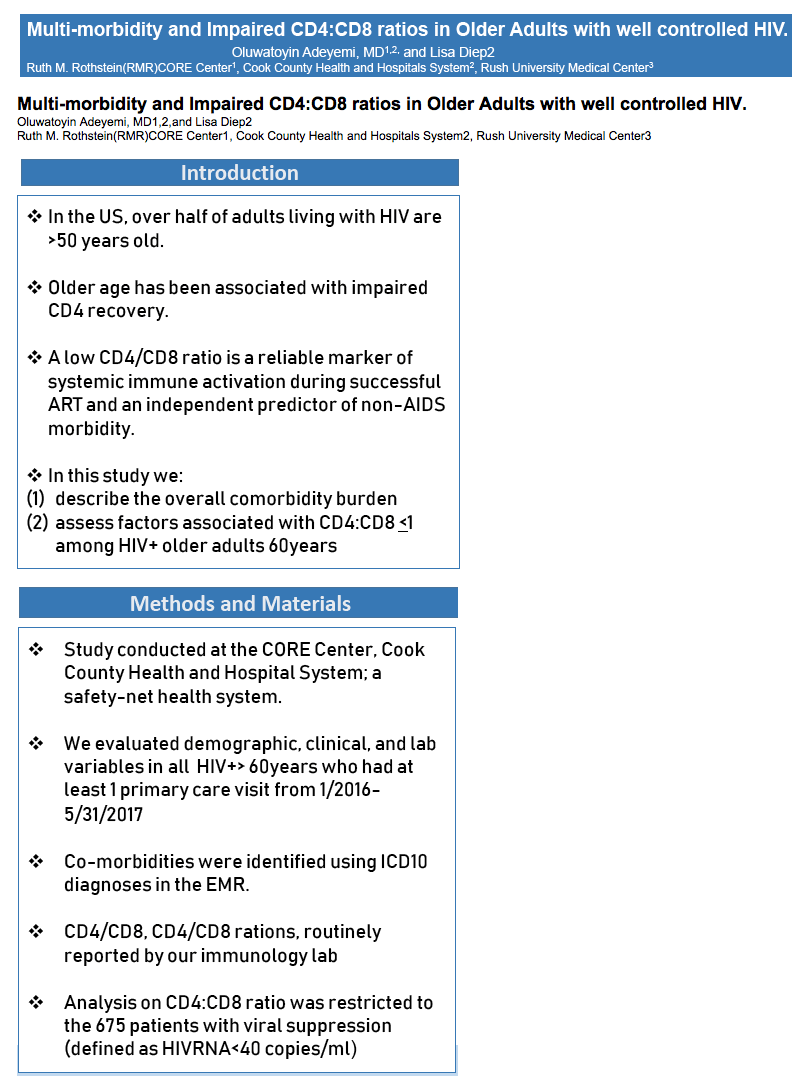
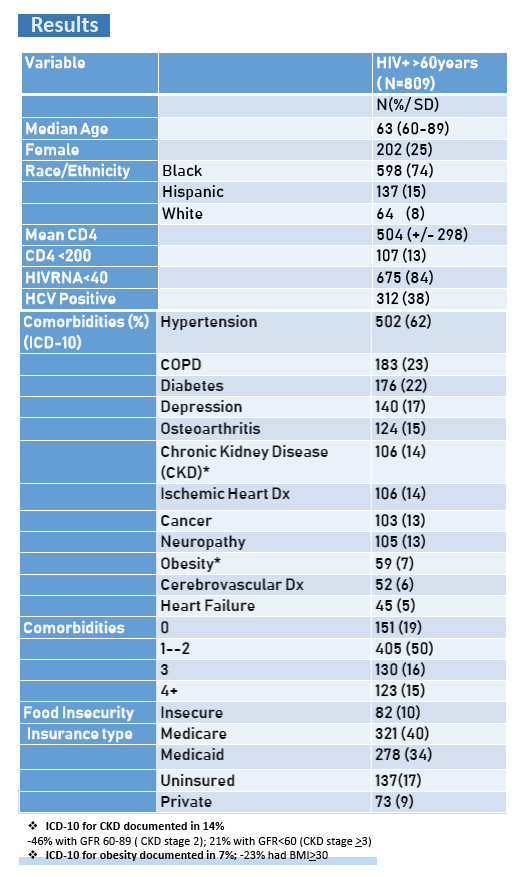
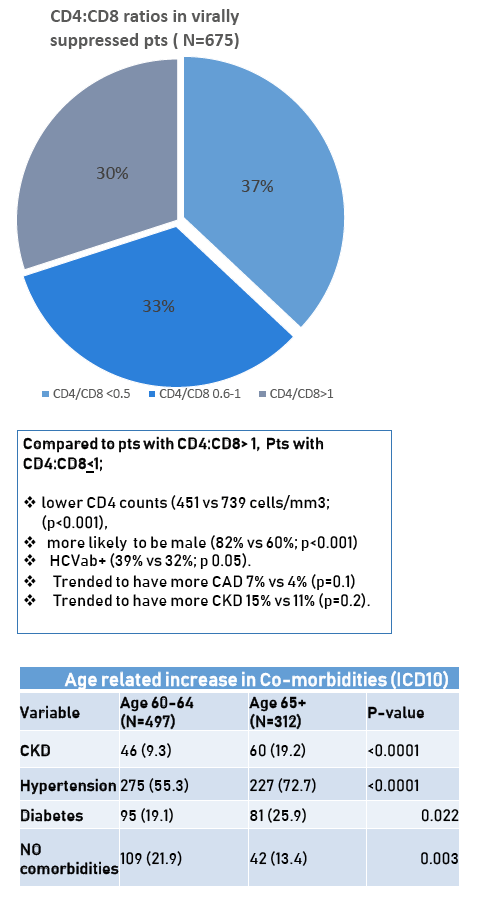
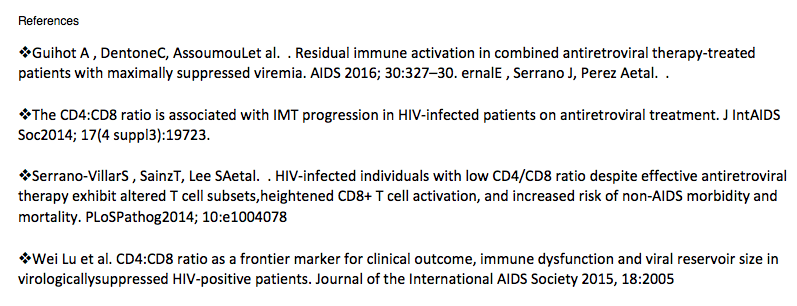
|
| |
|
 |
 |
|
|